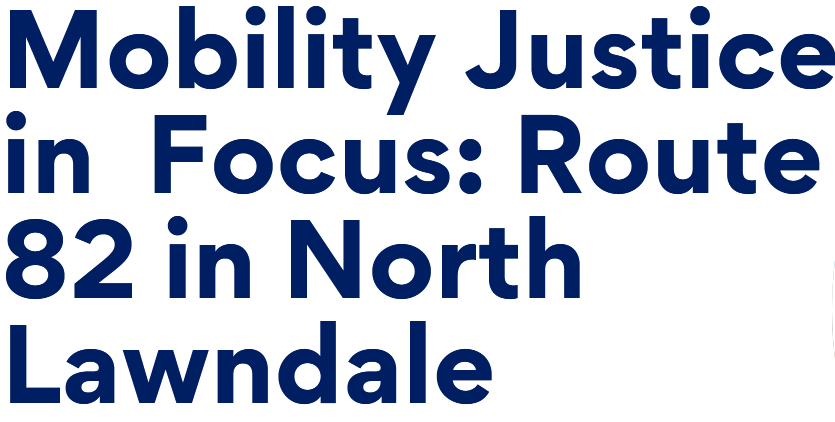Introduction
The CTA Kimball-Homan bus line, also known as Route 82, is a North/South line spanning from Little Village to Lincolnwood. The line has 200 maximum stops on its run and serves nine of Chicago’s unique community areas.6 North Lawndale, a West Side neighborhood grappling with both historic and current economic disinvestment, is one of these community areas.
This report examines the equitability of service along Route 82 through a mobility justice lens. According to Untokening, mobility justice determines that “when people live at the intersection of multiple vectors of oppression, unfettered access to mobility and public space are not guaranteed.”7 North Lawndale is a majority Black and Hispanic/Latino community with a significantly higher proportion of low-income, disabled, and environmentally vulnerable residents than the city of Chicago average. A bus route that does not provide enhanced service to a marginalized community such as North Lawndale does not meet the criteria for mobility justice set by Untokening. Conversely, enhanced bus service that increases the bus’s reliability could mitigate spatial inequities that currently exist. This report posits that enhanced service, rather than equal service, promotes racial and economic justice and should be a priority for transit agencies. Mobility justice demands that impacted communities are “given space and resources to envision and implement planning models and political advocacy on streets and mobility that actively work to address historical and current injustices.”8
The demographic makeup of North Lawndale directed the project team to study local transportation networks—specifically, Route 82— using Untokening’s mobility justice criteria. Access to equitable transportation, especially in historically underserved communities like North Lawndale, helps individual residents to live safe and healthy lives while working toward community-wide restorative justice. Public transit is an inherent right for all, regardless of race, income, age, location, or ability. However, North Lawndale’s unique history makes it crucial to ensure equitable, safe, frequent, and reliable bus service.
This document begins by summarizing existing conditions to contextualize and justify further study along Route 82 in North Lawndale. Second, the report examines the frequency and reliability of Route 82 in two parts:
- (1) a regional comparison to CTA service standards at the city level and (2) a national comparison to peer agencies across the United States.
- Next, the report audits North Lawndale’s 22 Route 82 bus stops for quality and accessibility.
To conclude, the report provides recommendations for future areas of study and action.
History of North Lawndale and Route 82
North Lawndale’s land use includes two-flat apartments, shoebox houses, railroads, and massive industrial sites. It is home to K-Town Historic District, a pristine sixteen-block stretch of historic Graystones built between 1901 and 1931.9North Lawndale is surrounded by rail on the West, South, and East, and the Eisenhower Expressway to the North.10 The neighborhood was annexed by Chicago from Cicero in 1869 and became an enclave for Jewish immigrants over the next 50 years. However, between the 1930 and 1960 Censuses, white flight shifted the population from almost entirely White to over 90 percent Black residents.11 In 1966, Martin Luther King Jr.’s visit to North Lawndale amplified the neighborhood’s burgeoning culture of community activism. After Dr. King’s assassination in 1968, uprisings ensued across the nation in an “angry outpouring of grief.”12 Fearing they could lose their insurance, anchor businesses like Sears-Roebuck shifted their headquarters or retreated from North Lawndale completely.13 This ushered in an era of continued unjust and systemic disinvestment in the community.
Black homebuyers in North Lawndale were limited by “contract selling,” a widespread and federally endorsed discriminatory mortgage lending practice in which a buyer pays a monthly fee to a contracted firm in lieu of a traditional mortgage payment to a bank, denying them the same chance to build equity. A lack of access to credit and equity-building tools often reinforced cycles of generational poverty. Redlining compounded contract selling by designating neighborhoods as too “undesirable” or “risky” for investment because of their racial makeup. The effects of these discriminatory practices and systemic disinvestment are still apparent in North Lawndale today. A disproportionate share of North Lawndale’s current land use inventory consists of vacant lots (15 percent, compared to five percent for the city of Chicago). Empty storefronts line the streets and essential businesses, including a busy Walgreens, have recently closed down. While disinvestment is prominent, community advocacy and reinvestment have contributed to important amenities in North Lawndale, detailed later in this report.
The Route 82 bus is a vital asset, connecting community members to essential services in and around North Lawndale. Route 82 has run in one form or another since 1931. It began as a streetcar service and was replaced by motor buses in 1937.14 While the route and service have changed over the last century, today Route 82 runs from its Southern terminus at 31st Street and Pulaski Road north to Lincolnwood Town Center Mall. The bus stops at the Central Park Pink Line, Kedzie/Homan Blue Line, Belmont Blue Line, and Kimball Brown Line stations. The route cuts through the heart of North Lawndale along Central Park Avenue, Douglas Boulevard, and Homan Avenue.15 It is an important artery for North Lawndale residents, serving schools, grocery stores, and other amenities.
Demographics
North Lawndale is made up primarily of Black and low-income residents. The median age is 34.3, similar to 35.3 for all of Chicago.16 While 28.4 percent of all Chicagoans identify as Black, North Lawndale’s residents are 77.7 percent Black (see Figure 1).17 Residential density is highest in the community’s center, where Route 82 runs along Homan and Central Park avenues (see Figure 2).18 Only 20.3 percent of Chicago households make less than $25,000 a year, compared to the 42.3 percent of North Lawndale households that make this same amount (see Figure 3).19
A significant 19.5 percent of North Lawndale residents live with a disability, compared to 11.3 percent of all Chicagoans (see Figure 4). This difference is important because over 20 percent of non-workers and 12 percent of workers aged 18 to 64 with disabilities live in households without vehicles. 100 percent of CTA buses are compliant with the ADA, with features such as ramps, wheelchair securement areas, visual displays, and auditory announcements, making bus travel the most accessible mode of public transportation in Chicago. However, accessibility goes beyond what happens inside the bus. Features like curb cuts, ADA-compliant sidewalks, and tactile ramps are crucial for riders with disabilities. Later in this report, a bus stop audit assesses these features’ presence at North Lawndale bus stops. Without accessibility assets outside of the bus, Route 82 fails to serve the North Lawndale community equitably.
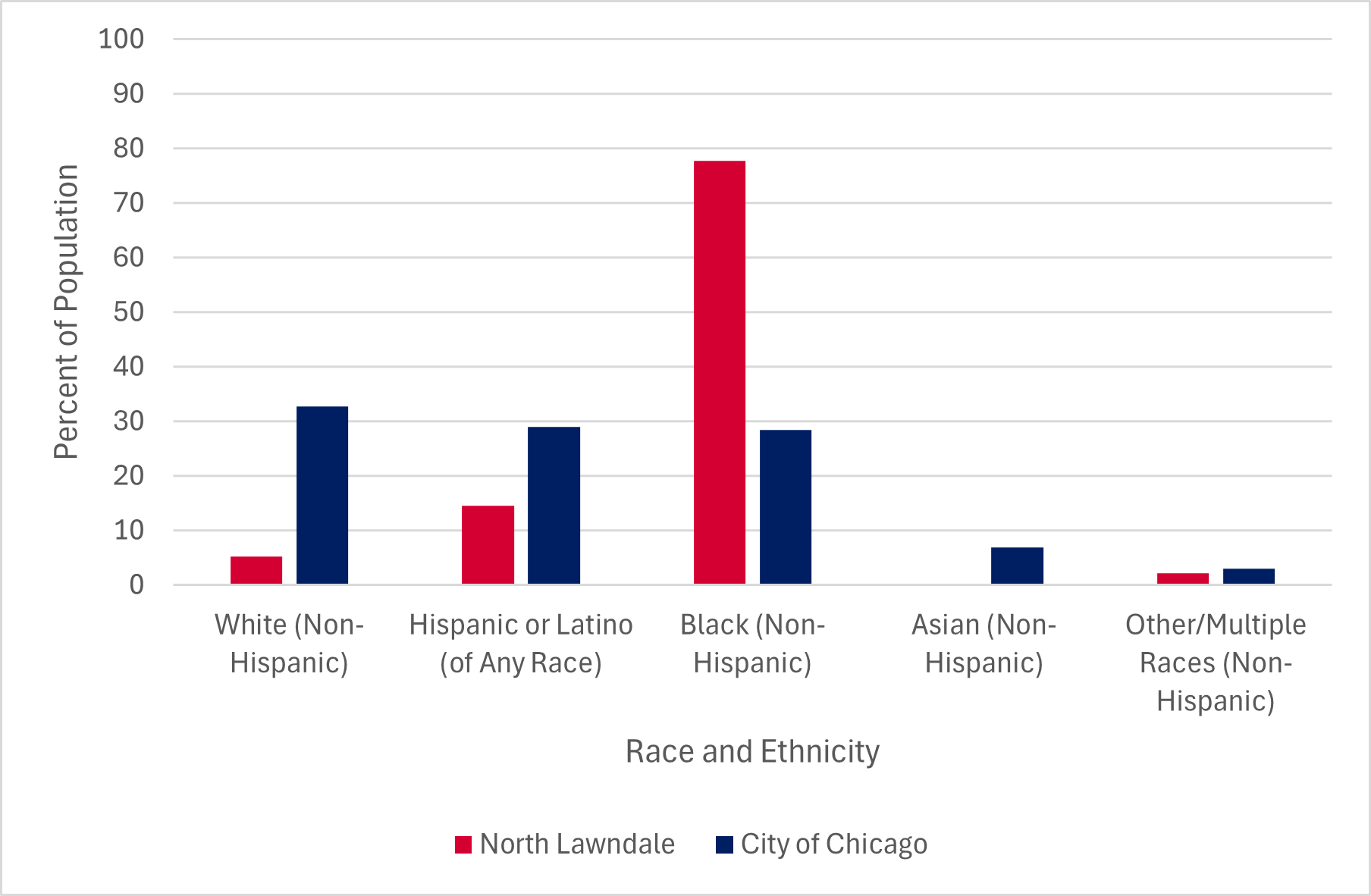
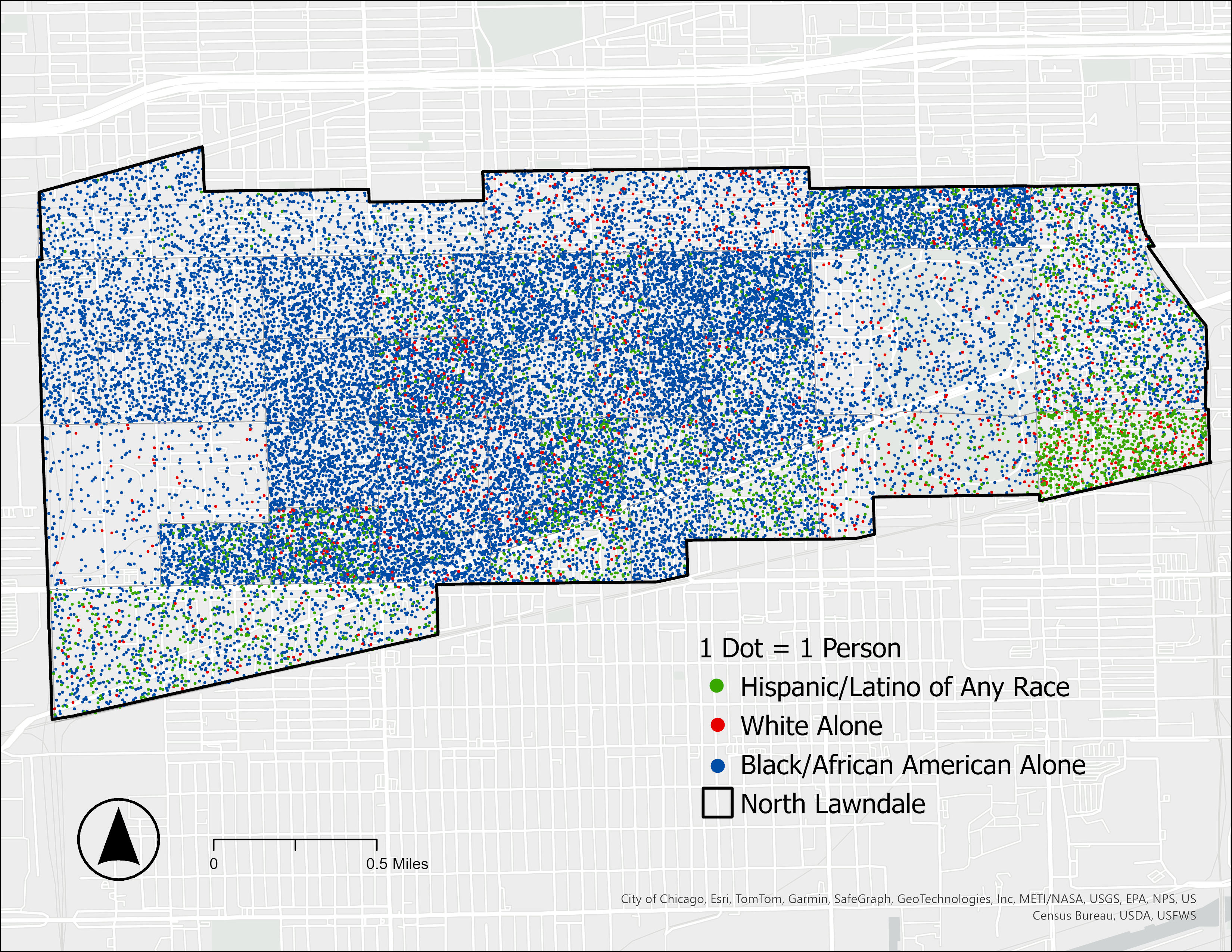
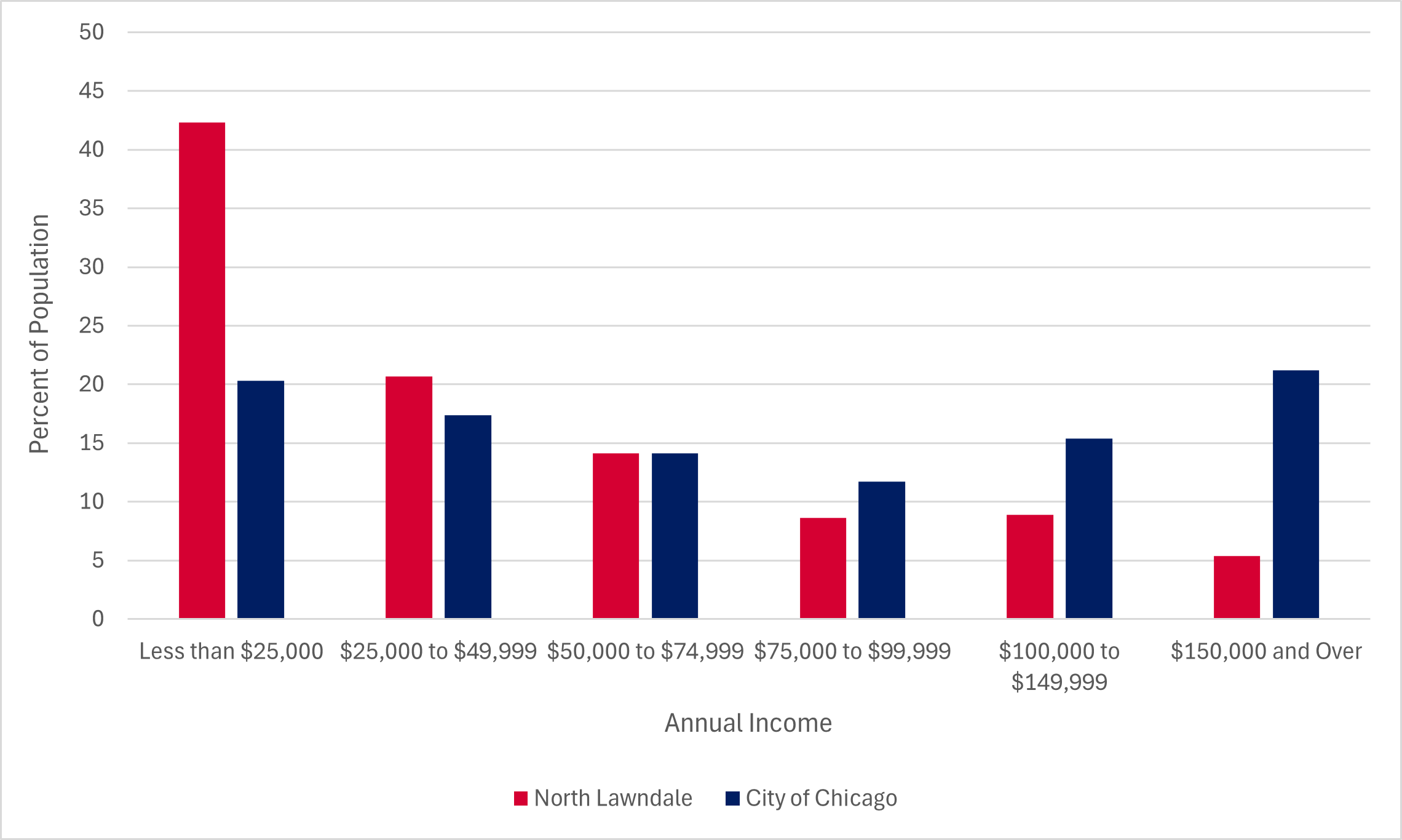
A significant 19.5 percent of North Lawndale residents live with a disability, compared to 11.3 percent of all Chicagoans (see Figure 4). This difference is important because over 20 percent of non-workers and 12 percent of workers aged 18 to 64 with disabilities live in households without vehicles.20 100 percent of CTA buses are compliant with the ADA, with features such as ramps, wheelchair securement areas, visual displays, and auditory announcements, making bus travel the most accessible mode of public transportation in Chicago. However, accessibility goes beyond what happens inside the bus. Features like curb cuts, ADA-compliant sidewalks, and tactile ramps are crucial for riders with disabilities. Later in this report, a bus stop audit assesses these features’ presence at North Lawndale bus stops. Without accessibility assets outside of the bus, Route 82 fails to serve the North Lawndale community equitably.
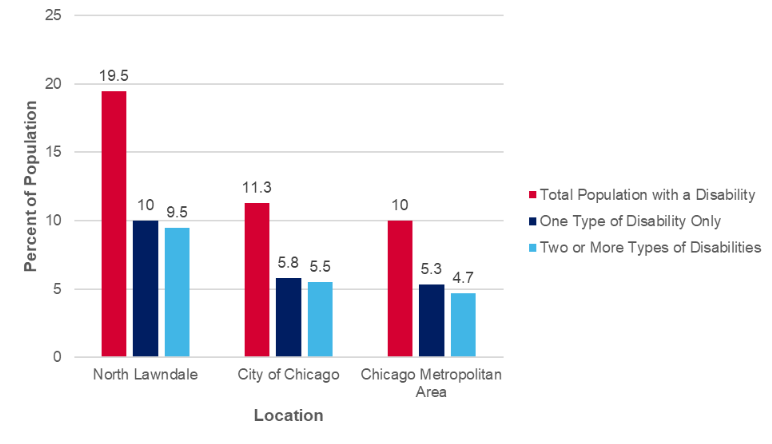
Route 82 is essential to North Lawndale’s economy, providing daily transport to and from employment centers. In 2022, 60 percent of North Lawndale residents were employed outside of the community area (see Figure 5). Approximately 23 percent of residents commuted to work via public transit, higher than the City of Chicago’s 21 percent. However, North Lawndale residents also commute by car at a higher rate (57 percent) than the Chicago average. This indicates that, although North Lawndale residents are more reliant on transit to get to work, they also may only have the option to drive due to unreliable or unavailable transit options.
North Lawndale is currently classified as a jobs desert, with nearly half the population working outside the neighborhood in places like the Loop and Near North Side (see Figure 26 in the Appendix). Healthcare is the largest employment sector, with many residents employed as essential healthcare workers. From 2001 to 2020, the neighborhood lost nearly 25 percent of local jobs. Additionally, many of the 3,000 jobs created in North Lawndale over a similar period are held by non-local White workers commuting from outside the neighborhood. As a result, more North Lawndale residents are forced to find employment outside their neighborhood. Additionally, only 6.7 percent of North Lawndale residents worked from home in 2022, compared to 15.6 percent of all Chicagoans (see Figure 6). Together, these factors underscore the need for reliable, frequent, and equitable transportation.

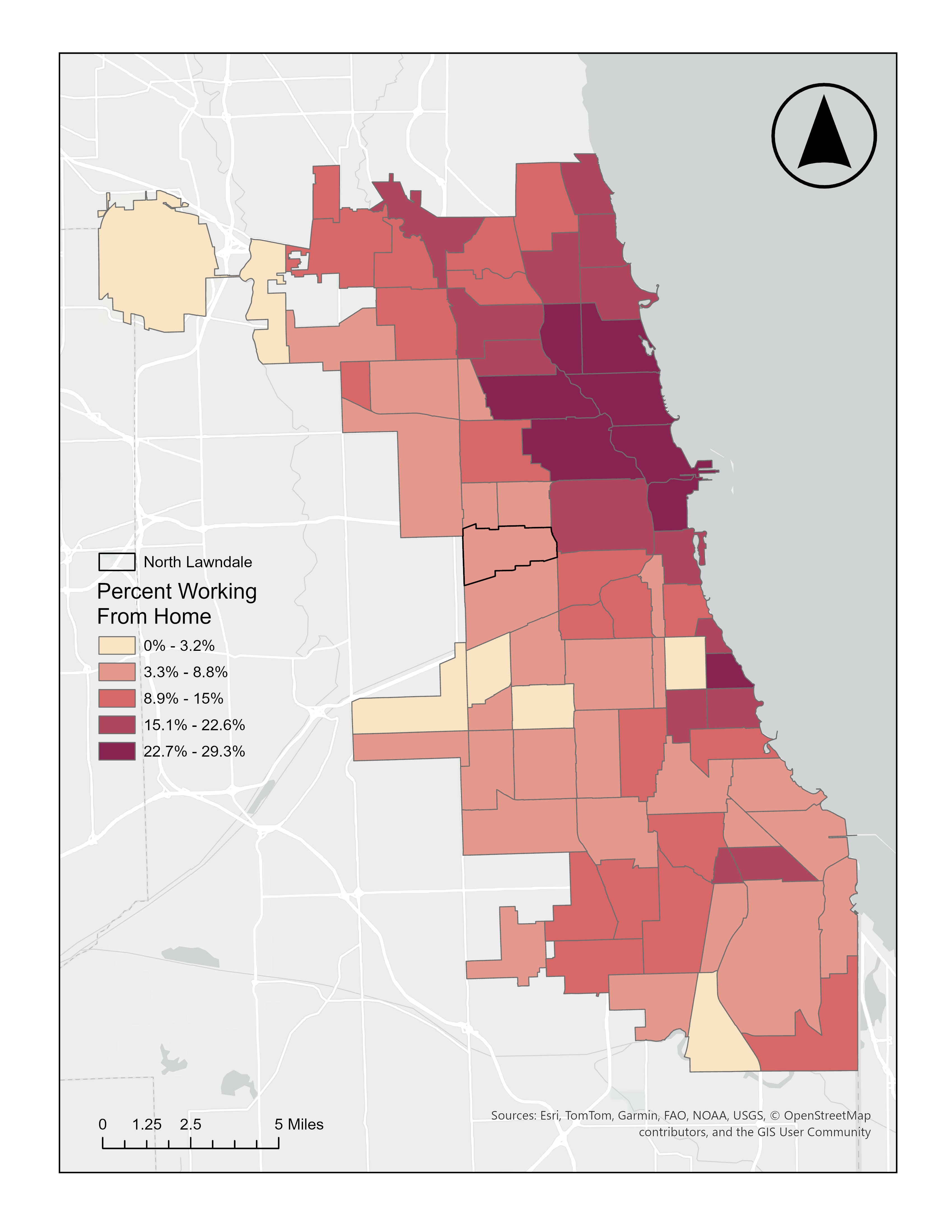
Continue Reading: Introduction: Mobility Justice
